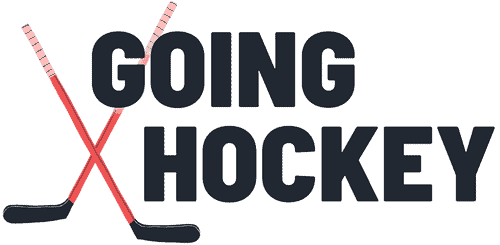In the world of professional ice hockey, this article delves into the evolving frequency of fights on the ice, examining their historical context, changing dynamics, and implications within the modern game.
How often do hockey players fight?
Top fighters in the NHL will fight 8~14 times per season. That translates to one fight, every five to ten games. Meanwhile, roughly 75% of NHL players record no fights at all.
Fighting trends have drastically fluctuated throughout the history of the NHL. Keep reading to see how prevalent fighting has been, and where trends seem to be headed today.

How Often Do Hockey Players Fight?
Nowadays, only ~25% of NHL players record a fight in a season. Of that 25%, the top fighters record 8~14 fights per season, which translates to around 1 fight every 5 to 10 games.
On average, hockey players record less than 1 fight per season, or less than 1 fight every 82 games – almost nothing.
Additionally, many players never fight in their careers.
How Many Fights Are There In A Hockey Game?
There are roughly 0.25 fights per game in the NHL. Meaning, you will likely see 1 fight per every 4 games.
Historically, however, this number has been much higher. In 1988, there were roughly 1.1 fights per game.
Most games would have at least one fight if not multiple fights. There were 260+ players who recorded 2 fights or more in the 1997~1988 season. And nearly half of the players in the NHL had at least 1 fighting major in that same season.
Fighting Is On The Decline
This graph shows how the rate of fighting has changed in the NHL throughout time:

Analysis and Commentary:
- Initial Period (1955-1970s):
- During the early years, fights per game are relatively low, often less than 0.3 fights per game.
- This reflects the fact that fights were not as common in the early days of the NHL.
- The Peak (1980s):
- The late 1970s and early 1980s stand out with a peak in fights per game.
- This period saw more physical play and the presence of enforcers on teams, leading to a higher frequency of fights.
- Fluctuations (1980s – 1990s):
- Fights per game continue to show fluctuations in the mid-1980s and 1990s.
- Changes in rules, enforcement, and team strategies likely contributed to these fluctuations.
- Decline (Late 1990s – Early 2000s):
- Fights per game start declining from the late 1990s and into the early 2000s.
- This aligns with the NHL’s efforts to emphasize skill, safety, and reduce fighting incidents.
- Drop and Recovery (2004-05 Lockout):
- The lockout in 2004-05 leads to a drop to zero fights per game for that season, due to the cancellation of the entire season.
- Steady Decrease (Late 2000s – 2010s):
- Fights per game continue to decrease steadily from the late 2000s through the 2010s.
- The NHL’s push for a faster and more skill-based game has a substantial impact on the decline.
- Stable Trend (2010s – present):
- In recent years, fights per game seem to have stabilized at a much lower level compared to previous decades.
- The NHL’s efforts to prioritize player safety and promote high-speed action play a significant role.
This analysis provides insight into the historical evolution of the “fights per game” statistic in the NHL. For a more comprehensive analysis, you could dive deeper into specific eras, examine correlations with rule changes, and explore how player demographics have influenced this aspect of the game.

The 1980s – Golden Era Of Hockey Fights
The 1980s marked a distinct era in hockey where the frequency of fighting reached its peak, adding an intense and visceral dimension to the sport.
During this period, the average “fights per game” (FPG) soared to unprecedented levels – 1.10 fights per game – creating a unique atmosphere on the ice. Players engaged in altercations more frequently than ever before, turning fights into a notable feature of the game.
The presence of enforcers, such as Tiger Williams, Chris “Knuckles” Nilan, and Dave Semenko, contributed to the rise in fighting during the 1980s. These enforcers played a crucial role in establishing a physical and intimidating presence on the ice, which often led to confrontations with opponents.
The high FPG was partly a reflection of the strategy employed by teams to create space for their skilled players and to gain a psychological edge over their rivals.
Media coverage also played a role in amplifying the spectacle of fights during this era. Highlight reels frequently featured the most dramatic altercations, elevating the visibility of fights and making them a focal point of discussions surrounding the game.
This heightened attention further cemented the perception that fighting was an integral part of the NHL’s identity.
In summary, the 1980s marked a period of heightened fighting in hockey, with the average “fights per game” reaching its zenith. Enforcers, media coverage, and the strategy of the time all contributed to this phenomenon.
While the era’s focus on fighting was a defining characteristic, the NHL’s subsequent emphasis on mainstream popularity and skill development has led to a decline in the frequency of fights, making the 1980s a unique chapter in the sport’s history.


Leave a Reply